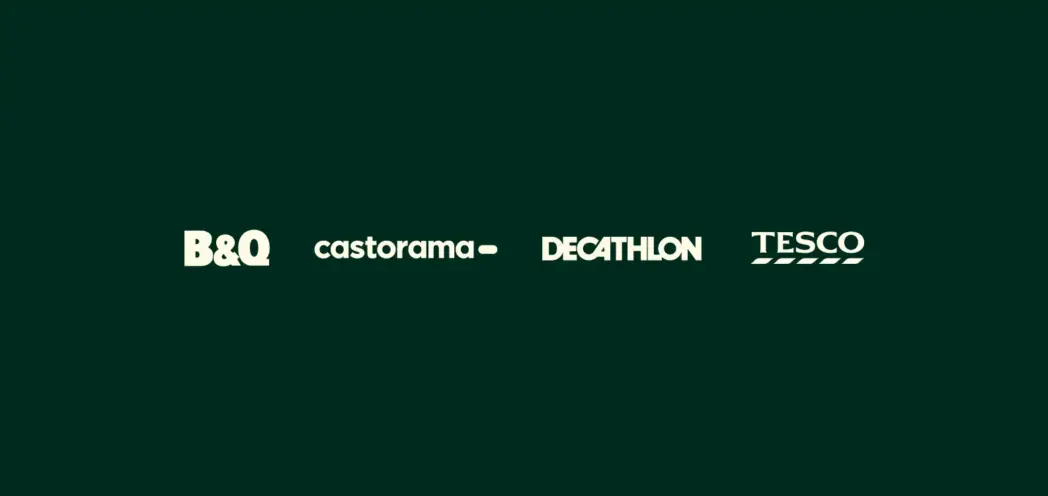From High Street to Marketplace
‘Attention Shoppers: Internet is open’. Few who read that New York Times headline 30 years ago could have imagined how much ecommerce would transform the world. Retailers have had to adapt and now their inroads into marketplaces represents big opportunities for sellers.
The best retailer marketplaces focus on giving consumers what they want – a frictionless buying experience, value, and choice. Choice is critical and that is where verified sellers, or ‘partners’, are having a huge impact.
The results have been impressive for retailers, and it is worth considering how their marketplace ambitions can fuel seller growth too. Here, we take a look at B&Q, a large UK home improvement retailer, as it is a good example of what is possible.
Retail Marketplaces – Doing It for Themselves
B&Q launched DIY.com in 2022. By the end of 2023, its marketplace had attracted 320 million visits, generating a notable contribution to the core business. In January 2023, DIY.com’s marketplace sales represented 22% of the retailer’s total online sales. Within a year, that percentage grew to 38%, and it is on track to keep growing.
Whilst this is no doubt good news for the retailer, these new marketplaces offer sellers three new sales avenues.
1. Brand new debut
With strong brand recognition amongst consumers, retailers able to maximise their store presence with an efficient marketplace are now a force to be reckoned with.
The good news for sellers is that they are open for business. DIY.com for example, has 1.2 million products available from 1,100 sellers and as it aims to expand to include 2 million home and garden products, it is actively seeking to recruit more sellers.
As consumers gravitate to the online offering of high street names they are familiar with, marketplaces are maturing, with more players offering greater growth potential.
2. Geographic expansion
Sticking with B&Q as our example, its parent company also owns Castorama and Brico Dépôt in France and it operates in Poland, Iberia and Romania.
Castorama also has an ecommerce marketplace and B&Q has stated it is looking to introduce international sellers to its DIY.com platform. It is actively exploring how to manage cross border shipping and tax implications.
Retailers with the ambition and infrastructure to expand their geographic reach represent a clear opportunity for sellers to expand with them.
3. Broad appeal
DIY.com encompasses items for the garden as well as the home, a vast scope, attracting customers looking for everything from cement mixers to cushions. This breadth has led to retailers showcasing items in their marketplaces that their stores would never have stocked.
Tristan Commecy, Head of Marketplace at B&Q, admitted: “We were very surprised to see products that we probably would not have ranged ourselves if we had to buy them for stores, still selling.”
DIY.com’s much wider range has also pulled in a broader mix of consumers. Last year, 50% of its shoppers had never previously bought from B&Q. This creates yet more momentum for sellers and retail marketplaces.
Three retailer marketplaces looking for sellers
- The Range is a home, garden and leisure retailer based in the UK and Ireland, it has over 200 stores and it delivers to 27 countries across Europe. It is actively encouraging sellers to join its marketplace, The Range Plus.
- Decathlon is huge. A French sporting goods retailer, it has more than 2200 stores in 57 countries. Its omnichannel strategy includes marketplace integration for smaller businesses and in-store product showrooming.
- Mountain Warehouse is recruiting new sellers with products suitable for its outdoor and leisure offering. It has 370 stores in Europe, the United States, Canada and New Zealand and over 5 million customers.
The major re-launch – Tesco.com
UK-based Tesco is a multinational grocery and general merchandise retailer. The world’s third-largest retailer (measured by gross revenues) Tesco operates in seven countries and is a market leader of groceries in the United Kingdom, Ireland, Hungary and Thailand.
In 2006, it launched Tesco Direct, offering next-day delivery for items like books and CDs, but it closed in 2018.
Recent retailer marketplace successes however have caused it to think again and in June 2024, it announced the launch of Tesco.com. With 9,000 products across categories such as DIY, homeware, pet care, and toys, all Tesco Marketplace items are sold and dispatched directly by its trusted partners.
It currently features familiar brand names such as Tefal, Silentnight and Tommee Tippee, and has plans to expand its range. Sellers can contact the marketplace team at: MPSellers@tesco.com
More marketplaces, more opportunities
These are just some of the retailers agile enough to integrate marketplaces into their core business. For sellers, the investment represents significant new sales avenues – both in terms of exposure and geography.
A lot has happened since shoppers were told ‘Internet is open’ in 1994 and it is impossible to predict what the next thirty years will bring. Technological breakthroughs always create losers as well as winners, but with sellers now able to access fast payments, this should be an era where sellers, consumers and retailers enjoy a win / win.


